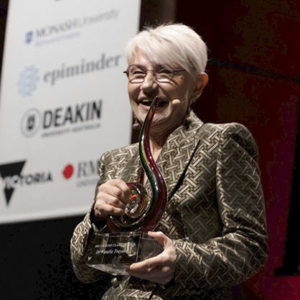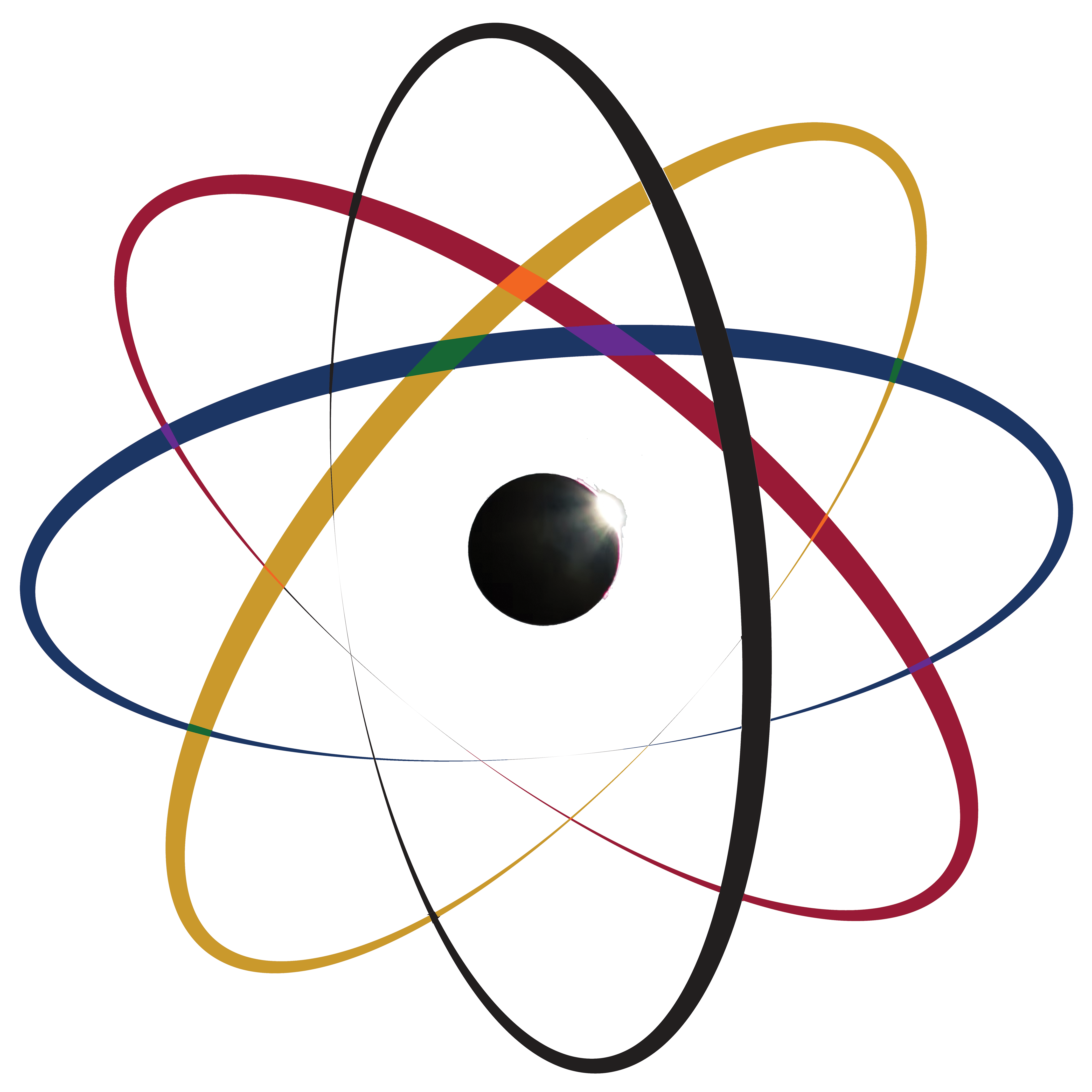Natalia Trayanova: Queen of (Digital) Hearts and Innovative Cardiology
by Dr Catriona Nguyen-Robertson MRSV
This piece appears in the June 2023 edition of Science Victoria magazine. All issues can be read online for free at rsv.org.au/Science-Victoria.

This article follows the 2022 Graeme Clark Oration, presented by Professor Natalia Trayanova (Johns Hopkins University) on 12 July 2022, hosted by the Convergence Science Network (CSN).
When it comes to your heartbeat, you want it the way Goldilocks does: just right. The improper beating of the heart – whether too slow or too fast or irregular – is known as arrhythmia. Professor Natalia Trayanova is revolutionising the way we track and treat our hearts. Natalia is a Professor of Biomedical Engineering and Medicine at John Hopkins University. Her team has developed an artificial intelligence (AI) algorithm to predict if – and when – someone will have a heart attack within ten years. They have also created a “digital twin” model of patients’ hearts for cardiac surgeons to simulate treatment options to determine the best one. She never imagined that she, an engineer with no formal medical training, would be in an operating theatre with surgeons looking to her for the “ok” before performing a procedure. However, with medicine evolving to become more interdisciplinary, it is teams such as Natalia’s that are at the cutting-edge.
Predicting a heart attack
Many people experience an arrhythmia at some point in their lives. And, although they are usually harmless, arrhythmias can be life-threatening. In some cases, they lead to sudden cardiac death (SCDA) – the heart suddenly stops beating. SCDA, which is specifically caused by arrhythmia, is one of the biggest killers of Australians under 50.1
Arrhythmia occurs when electrical impulses in the heart do not work properly. Implantable cardioverter-defibrillators can be placed in the chests to detect and correct irregular heartbeats in high-risk people. These defibrillators continuously monitor the heartbeat and deliver an electric shock to restore a regular heart rhythm when needed, as the electricity resets the heart’s own electric pulse. However, this device is mainly for a certain type of arrhythmia and helps fewer than 20% of people who suffer SCDA.2
Highlighting the importance of a shift towards personalised medicine, research into monitoring SCDA risk has mainly taken a one-size-fits-all approach that clearly does not help everyone. There are patients who may be at low risk of SCDA receiving defibrillators that they might not need, and there are high-risk patients that are not getting the treatment they need and could die in the prime of their life.
Natalia’s solution, can instead be personalised for all patients, and if implemented widely, may prevent as many as 20% of all deaths worldwide.3 The technology, called Survival Study of Cardiac Arrhythmia Risk, (SSCAR) uses AI neural networks to build a personalised survival assessment for each patient with heart disease that can then inform their treatment plan.
The name, SSCAR, is a nod to the cardiac scarring caused by heart disease that often results in life-threatening arrhythmias, especially in patients who have already had one heart attack. During a heart attack, oxygen deprivation causes part of the heart to be damaged, forming scar tissue. Heart attack victims are therefore particularly prone to irregular rhythms. Scarring can cause the electrical wave before a heartbeat to become disrupted, bouncing back or reverberating rather than acting as a single wave. The heart stops contracting in a synchronous manner and, in Natalia’s words, becomes more like a ‘bag of wiggling worms’. This scarring is key to the predictions; the neural networks learn from a patient’s heart scans, especially taking note of the scar distribution.
As machine learning algorithms learn best with many examples, the team used hundreds of cardiac scans from patients at John Hopkins Hospital. These images all showed scarring around the heart so that the algorithm could be trained to detect patterns – something clinicians cannot do. When clinicians look at these types of images, they note simple scar features, but there is much more information not visible to the naked eye. The scars can be spread through the heart in different ways, and each pattern says something about a patient’s chance of survival.
SSCAR’s predictions so far appear better than the standard measures and prediction methods currently used by doctors.4 Further, its accuracy has been validated in tests across 60 US health centres. Given that patients in other health centres had different cardiac histories and different imaging data to what the algorithm was originally trained on, this suggests that the technology is highly adaptable.
This is the first time that neural networks have been used to build a personalised survival assessment for patients with heart disease. SSCAR can determine who is at risk of heart attacks due to arrhythmia and when they will occur.
But what can be done if you know that sudden cardiac death is coming? Natalia has figured that out too.
Treatment optimisation with a digital heart twin
By creating a digital twin of a person’s heart based on their scans, the virtual version of the heart can be extensively probed and prodded. Doctors can use this new computer-based method to simulate different treatment options and thus inform a patient’s treatment plan.
Arrhythmia can be treated with ablation: burning a particular spot in the heart. Surgeons assess a patient’s heart to find a good spot for ablation, however, there may be multiple places where the electrical rhythm appears to be off. If the root driver of the arrhythmia is not terminated and merely an off-target spot is burned, the arrhythmia will simply return over time. In many cases, the arrhythmia does indeed come back, the patient returns to hospital, and they do it all over again – all the while, the patient is accumulating more heart damage.
With a personalised digital heart twin based on a patient’s scans and medical history, Natalia’s team can find the perfect spot for ablation the first time round. They simulate the ablation in potential places of the digital replica, playing out each scenario virtually to find the best place for ablation prior to burning a patient’s real heart.
None of the members on Natalia’s team are medical professionals – they are all engineers. Yet in the operating theatre, the surgeons look to her and her team before beginning the treatment. Natalia finds it exhilarating, and somewhat surreal, that her team is giving such an amazing sense of responsibility in a medical procedure, but it means that patients do not need to come back.
Collaboration is key
The technologies developed by Natalia and her team are empowering cardiologists to decide what needs to be done for each patient and when to prevent cardiac death. The team also hopes to build similar algorithms to monitor other heart diseases, and the technology could even be extended into other fields of medicine that also rely on clinical imaging and visual diagnosis.
Natalia’s work exemplifies the use of convergent science: technology, engineering, physics, and medicine in collaboration as the future of cardiology and healthcare in general. Computational approaches and AI as major tools in healthcare and precision medicine, and we will hopefully see the latest research translated into practice and clinicians adopting these cutting-edge tools soon.
Professor Natalia Trayanova delivered the 2022 Graeme Clark Oration in Melbourne. Hosted by the Convergence Science Network (convergencesciencenetwork.org.au), her presentation outlines the new technologies in greater depth, and can be watched at youtu.be/Bnxgi6cglwQ.
The Graeme Clark Oration, named after the inaugural Oration delivered by Professor Graeme Clark (inventor of the multi-channel cochlear implant), celebrates world leaders and advances in medical research and developments in convergence science. All past presentations are available to watch online at www.graemeclarkoration.org.au/past-orations.html.
—
References:
- Baker Institute. (Accessed June 21, 2022). ‘Sudden cardiac death’. baker.edu.au/health-hub/sudden-cardiac-death
- Wellens, H.J.J., et al. (2014). ‘Risk stratification for sudden cardiac death: current status and challenges for the future’. European Heart Journal. 35 (25), pp. 1642–1651. doi.org/10.1093/eurheartj/ehu176
- Rosen, J. (2022). ‘AI predicts if and when someone will experience cardiac arrest’. John Hopkins University Hub. hub.jhu.edu/2022/04/07/trayanova-artificial-intelligence-cardiac-arrhythmia/
- Popescu, D.M., et al. (2022). ‘Arrhythmic sudden death survival prediction using deep learning analysis of scarring in the heart’. Nature Cardiovascular Research. 1, pp. 334–343 https://doi.org/10.1038/s44161-022-00041-9






